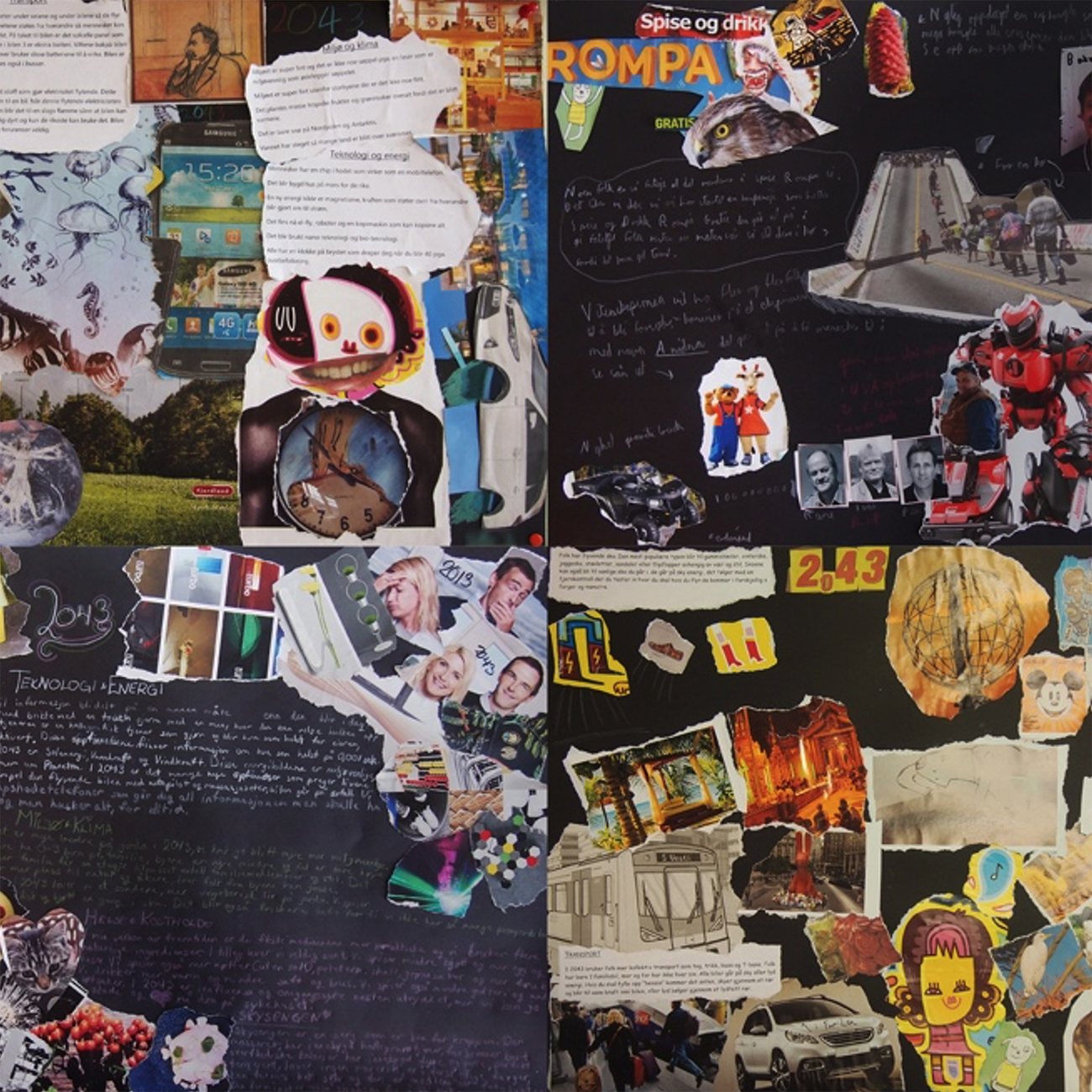Complexity, interdisciplinarity and design literacy
DOI:
https://doi.org/10.7577/formakademisk.4640Keywords:
Interdisciplinarity, general design education, future scenarios, design literacy, design thinkingAbstract
In today’s complex world, a variety of perspectives are needed to better understand and solve challenges. For decades, global organisations and researchers have pointed to interdisciplinarity as a way forward for educational systems. Educational research offers great possibilities and gains for students involved in interdisciplinary teaching and learning processes, and the interdisciplinary nature of design thinking and practice can play a vital role in interdisciplinary general education. This paper explores how future scenario-building, as part of general design education, can serve as a framework for inter-disciplinarity in general education and contribute to a better understanding of complex problems, challenges and design literacy.
References
Barnett, R. (2012). Learning for an unknown future. Higher Education Research & Development, 31(3), 65–77. https://doi.org/10.1080/07294360.2012.642841
Boradkar, P. (2010). Design as problem solving. In R. Frodeman (Ed.), The Oxford handbook of interdisciplinarity (pp. 273–287). Oxford University Press.
Buch-Hansen, H., & Nielsen, P. (2005). Kritisk realisme [Critical Realism]. Roskilde Universitetsforlag.
Capper, M. (2004). Scenarios as a design and product planning tool. Innovation, (Summer), 34–39.
Cross, N. (2011). Design thinking. Berg. https://doi.org/10.5040/9781474293884
Derbellay, F., Moody, Z., & Lubart T. (2017). Creativity, design thinking and interdisciplinarity. Springer. https://doi.org/10.1007/978-981-10-7524-7
Dunne, A., & Raby, F. (2013). Speculative everything: Design, fiction, and social dreaming. MIT Press.
Fuad-Luke, A. (2009). Design activism. Beautiful strangeness for a sustainable world. Earthscan.
Klein, J. T. (2010). A taxonomy of interdisciplinarity. In R. Frodeman (Ed.), The Oxford handbook of interdisciplinarity (pp. 15–30). Oxford University Press.
Malpass, M. (2017). Critical design in context. History, theory, and practices. Bloomsbury. https://doi.org/10.5040/9781474293822
Marzano, S. (2005). Past tense, future sense. Competing through creativity: 80 years of design at Philips. BIS Publishers.
McNiff, J. (2013). Action research. Principles and practice (3rd ed.). Routledge. https://doi.org/10.4324/9780203112755
Nielsen, L. M. (2013). Visualising ideas: A camera is not enough. In J. B. Reitan, P. Lloyd, E. Bohemia,
L. M. Nielsen, I. Digranes, & E. Lutnæs (Eds.), Design learning for tomorrow. Design education from kindergarten to PhD. Proceedings of the 2nd International Conference for Design Education Researchers. 14-17 May 2013, Oslo, Norway, (pp. 2080-2089). ABM media. https://hdl.handle.net/10642/1975
Nielsen, L.M. & Brænne, K. (2013). Design literacy for longer-lasting products. Studies in material thinking, 9, 1–9. https://hdl.handle.net/10642/1871
Paul, R. W. (1993). The logic of creative and critical thinking. The American Behavioral Scientist, 37(1), 21–39. https://doi.org/10.1177/0002764293037001004
Ringvold, T. A. (2014) Bygg din egen fremtid. Fremtidsscenariobygging i faget kunst og håndverk [Build your own future. Future scenario building in the Norwegian school subject of Art and Crafts. Educational possibilities and civic ethical perspectives] (Master thesis, Høgskolen i Oslo og Akershus [Oslo and Akershus University College]). http://hdl.handle.net/10642/2114.
Ringvold, T.A. (2019) Scenariobygging, fremtidsfortellinger, kritisk tenkning og medieutvikling [Scenario building, future stories, critical thinking and media development]. Paper presented at the Network Conference for Norwegian design, art and craft education in higher education. University of South-East Norway, Notodden, 21. – 22. january, 2019.
Science Education Resource Centre. (2017). Why teach with an interdisciplinary approach. htttps://serc.carleton.edu/econ/interdisciplinary/why.html
Thorpe, A. (2007). The designer’s atlas of sustainability. Island Press.
UNESCO. (1986). Interdisciplinarity in general education. A study by Louis d'Hainaut following an International Symposium on Interdisciplinarity in General Education held at UNESCO Headquarters from 1 to 5 July 1985. www.unesco.org/education/pdf/31_14.pdf
Willis, A. M. (2005). Editorial: Scenarios, futures and design. Design Philosophy Papers, 3(1), 1-7. https://doi.org/10.2752/144871305X13966254124077
Wilkinson, L. (2009). How to build scenarios. www.wired.com/wired/scenarios/build.html

Downloads
Published
How to Cite
Issue
Section
License
Copyright (c) 2021 Tore Andre Ringvold , Liv Merete Nielsen

This work is licensed under a Creative Commons Attribution-NoDerivatives 4.0 International License.
Authors who publish with this journal agree to the following terms:
- Authors retain copyright and grant the journal right of first publication with the work simultaneously licensed under a Creative Commons Attribution 4.0 License that allows others to share the work with an acknowledgement of the work's authorship and initial publication in this journal.
- Authors are able to enter into separate, additional contractual arrangements for the non-exclusive distribution of the journal's published version of the work (e.g., post it to an institutional repository or publish it in a book), with an acknowledgement of its initial publication in this journal.
- Authors are permitted and encouraged to post their work online (e.g., in institutional repositories or on their website) prior to and during the submission process, as it can lead to productive exchanges, as well as earlier and greater citation of published work (See The Effect of Open Access).
- The author(s) must manage their economic reproduction rights to any third party.
- The journal makes no financial or other compensation for submissions, unless a separate agreement regarding this matter has been made with the author(s).
- The journal is obliged to archive the manuscript (including metadata) in its originally published digital form for at least a suitable amount of time in which the manuscript can be accessed via a long-term archive for digital material, such as in the Norwegian universities’ institutional archives within the framework of the NORA partnership.
The material will be published OpenAccess with a Creative Commons 4.0 License which allows anyone to read, share and adapt the content, even commercially under the licence terms:
This work needs to be appropriately attributed/credited, a link must be provided to the CC-BY 4.0 licence, and changes made need to be indicated in a reasonable manner, but not in any way that suggests that the licensor endorses you or your use.



